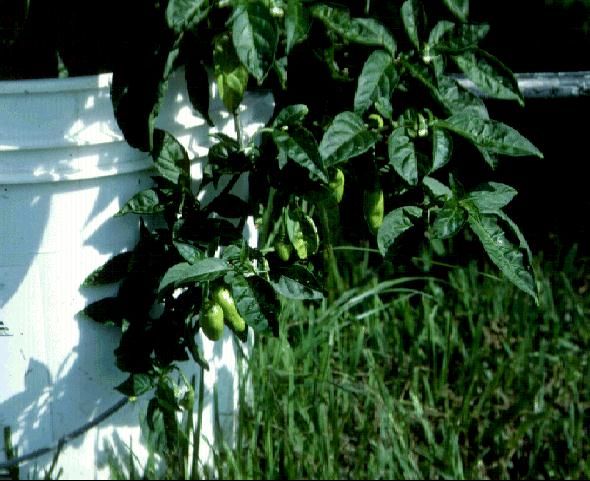Pepper, Datil—Capsicum sinense Jacques1
A distinctly different small hot pepper called datil has been grown in the St. Augustine area for some time by gardeners. It is particularly preferred by the Minorcan community of that area. Of course, it is not restricted to that part of the state and may be grown elsewhere.

Credit: James M. Stephens, UF/IFAS
Description
There is some indication that datil pepper belongs to C. sinense Jacques. This species is most readily distinguished by the three to five flowers at each node, the drooping pedicels, and the circular constriction at the base of the fruit "cap." The plants are 1½ to 2½ feet high; the fruits are from ½ to 4 inches long, varying in shape from spherical to oblong. Most of the other hot varieties of pepper are usually either C. annuum or C. frutescens.
Culture
Datil pepper is grown in a manner similar to other hot and mild peppers. Plant seed or set out transplants during frost-free periods. The plants need about five months to reach mature size. Occasionally, seed of datil will be offered for sale by gardeners. Otherwise, such seed is not always easy to obtain. One problem encountered in St. Augustine is the pepper weevil. These insects insert an egg at the base of the fruit in the pedicel; the developing maggot then causes the small fruit to drop.
Use
Most datil peppers are made into a hot sauce. Individual families make their own sauces, using well-guarded recipes. One of the more popular commercial sauces is called "Dat'l-Do-It." It features a combination of brown sugar, ketchup, tomato paste, honey, and the datil pepper sauce.


